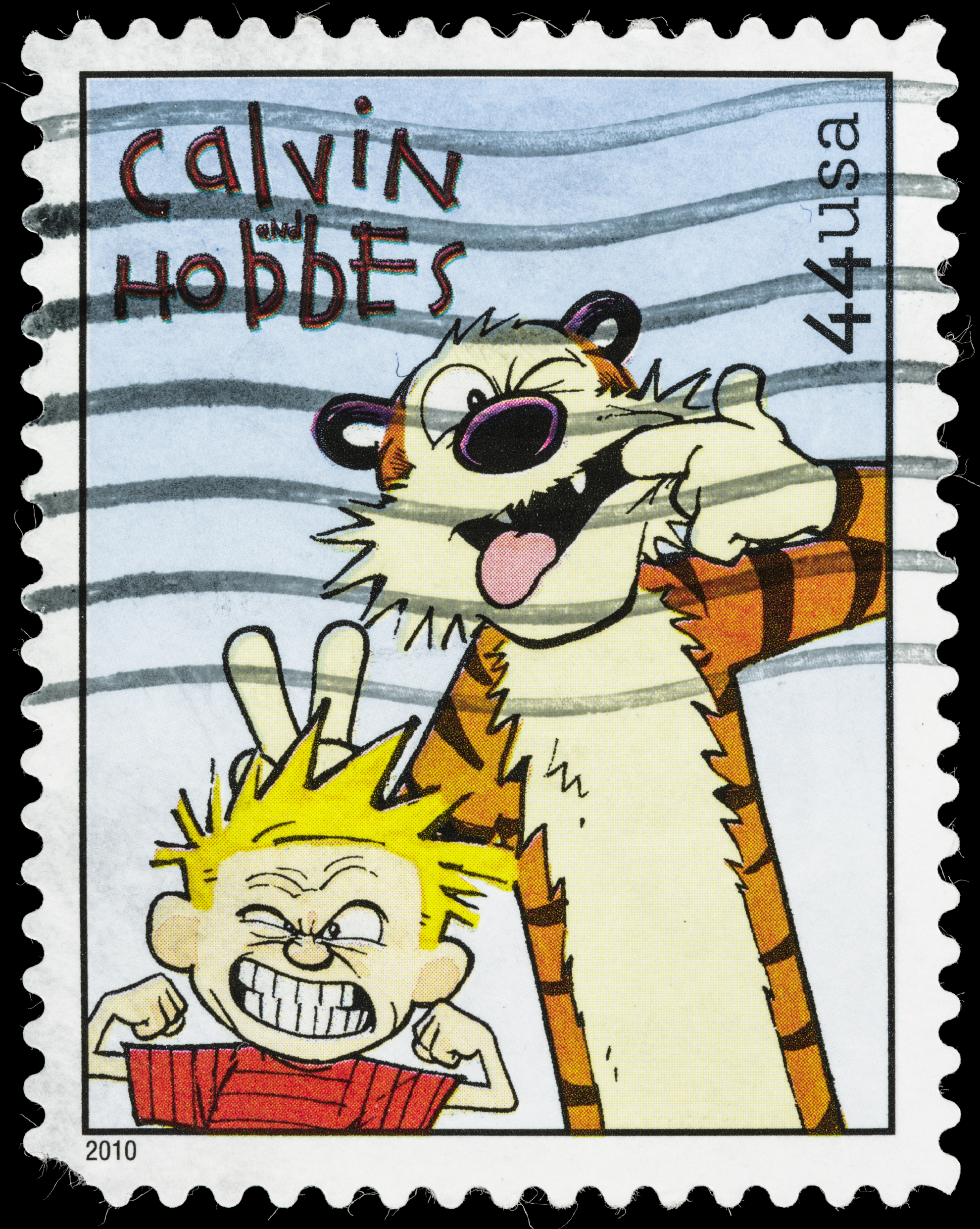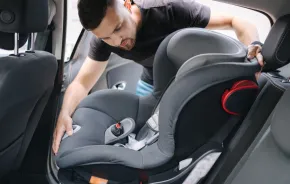
After I became a mother, one of the things I most looked forward to was rediscovering my favorite childhood books with my son: Not so much the picture books of the toddler years, but the classic chapter books of the school-age years: Little House on the Prairie, Charlie and the Chocolate Factory, The Wizard of Oz, The Narnia series, Charlotte’s Web, The Trumpet of the Swan.
Accordingly, last year, around the time my son turned 5, we started plowing through my favorites. As long as there were some pictures, a dramatic story line, some fighting and a bad guy (or bad witch or bad robot), my son was game. He loved the wildcat chase and sugaring stories in Little House in the Big Woods, the witches in The Wizard of Oz, and pretty much everything (the gold chocolate bar, the disappearing kids, the magical factory) in Charlie and the Chocolate Factory. We even discovered classics together that I had never read, such as Roald Dahl's Danny the Champion of the World, where the boy drives a car on his own to save his dad — was there ever a better storyline for an only son?
Then my son discovered Calvin and Hobbes.
Calvin entered our lives on a family visit, when my older nephews passed on a Calvin compilation. Though I hadn’t read Bill Watterson’s comic strip in years, I instantly reconnected with the towheaded boy of the big vocabulary and even bigger imagination. And my son — also an only boy with a big imagination, a love of tricks, and a tendency toward five-dollar words — experienced something between enthrallment and complete identification.
His dad and I started reading Calvin and Hobbes for 30–45 minutes at bedtime. Yes, he let us read him other books, but only if we finished with a few pages of Calvin. In those first months of C&H obsession, when we weren't reading Calvin stories, we’d be talking about them, or he’d be acting out Calvin’s adventures: “I am Stupendous Man!,” he shouted, from under his red cape. Or: “Spiff the Space Man is launching” he yelled. He loved Calvin’s tricks on neighbor girl Susie Derkin or the fact that no adults could truly see Calvin's stuffed tiger come alive.
While my son studied Calvin and his pouncing, philosophical tiger pal, I had plenty of time to study the rest of the cartoon. As a teen and young adult reading Calvin and Hobbes in the 1980s and 1990s, I had never wondered about how old Calvin was, or really anything about the parents, who, after all, are pretty bland compared to their wildly imaginative son.
But rereading it now, to my only son who is exactly Calvin’s age, I started finding all kinds of mini-lessons about parenting, life, and how middle-class American society has changed since 1995, the last year Calvin and Hobbes was published (the strip ran from November 1985 to Dec. 31, 1995, before Watterson ended it).
And because it’s likely you won’t log as many hours with Calvin and his tiger as I have — think Malcolm Gladwell’s 10,000 hours — I’ll share them with you.
1. 6-year-olds can work a can opener.
Calvin is 6 years old. Does this shock you as much as it shocked me? Not because his parents regularly kick him outside to play for hours by himself — this is what I’d expect of a 1980s-era 6-year-old — but because of his ability to successfully feed his stuffed tiger by opening a can of tuna on his own (Hobbes, for newbies, is a tuna fish fanatic). My own 6-year-old might be able to match Calvin in Stupendous Man-like exploits, but as far as I know, he’s never even seen a can opener, much less used one. Of course, Calvin had a big incentive — his tiger would have pounced on him if he didn’t regularly feed it albacore. But still ... must remedy this.
2. I need to spend way more time reading on the couch (or hammock, or beach chair).
During our hours of reading C&H, I have had two recurring reactions. First, admiration for Watterson (who, by the way, was only 27 years old when he started drawing Calvin and Hobbes, another mind-blowing fact). The humor and humanity in this strip — through the drawing and the writing — is timeless. I love that my son and my husband and I often appreciate it on different levels but for the same reasons: it’s damn funny and wildly creative and makes you think.

Remember when Calvin lets aliens have the Earth in exchange for 50 alien leaves for a school project? Or the when his evil bike chases him around the house? Or when Calvin builds a Transmogrifier machine out of an upside-down cardboard box and he turns himself into a mini Hobbes ("Boy, I'm hot," says Calvin. "How do you stand having all this fur?"). Or the monsters under his bed that regularly talk to him, sometimes while drooling?
My second reaction? Jealousy of Calvin’s parents. When Calvin’s parents show up in the strip, they are frequently reading. For pleasure. While sitting on a couch. Or in a hammock or in their bed. While interacting absent-mindedly with their son. Which I never do, though reading for pleasure is one of my all-time favorite things to do.
If this can be seen as a societal change over two decades, why? Part of it, I suppose, is the culture of intensive parenting that’s so talked about these days. I do play with my son more than my parents played with me and my sisters, though our 6-year-old does log a fair number of hours of pretend-play puttering (and media-watching) by himself. Just as insidious, though, is the infiltration of social media, the Internet, and work (I work at home) into all the corners of my brain space and life. Like most of us, when I have a spare moment, I’m checking email, or checking Facebook, or checking texts. I mostly save reading for vacations or the precious few minutes between getting into bed and falling asleep. Must remedy this.
4. Be zen with destruction.
The word “weapons” entered the house about the time my son turned 4 (thank you, older preschool boys) and he’s been in full thrall ever since. Star Wars, Ninjago, Chima, sword fights, archery, guns, bombs, missiles. If it’s destructive, he’s pretend-played it. As my son destroys imaginary cities with one swish of a Lego missile, it’s helpful to this former Barbie-toting mom — who was raised in a household of girls — to bring up an image of Calvin building sand cities (Stupidopolis) as close to the tide as possible, so he can imagine the tsunami’s wrath on the city, and then to remember the generations of boys (and girls!) before Calvin playing out similar scenarios.
“Why does he build everything so close to the water?," Calvin's dad wonders mildly in that strip. "It’s stupid.”
5. Never overreact.
I came late to parenting and have been lucky enough to have as mentor a sister who’s already raised two boys — the same nephews who first passed on a C&H book to us. One of my sister's parenting tips is also all over Calvin and Hobbes: Never overreact. His parents manage to say things mildly (see above) even when Calvin asks for a smoke (Calvin's mom lets him have a puff), consistently can't distinguish between imagination and reality, or gets called the principal's office yet again.
6. It’s OK to overreact
Of course, Calvin's long-suffering dad does go ballistic sometimes, leading to some of the funniest moments in the strip. My favorite: When he loses his temper at Calvin’s shenanigans during a road trip and then finds that his explosive outburst of anger made him the winner of the weird-face contest that Calvin and Hobbes were holding in the backseat of the car. And you know what — that’s OK, too.
7. Remember that humor wins.
The truth: When we started reading C&H, while I loved rediscovering the humor, bite and sophistication of the strip, I also discovered some things I didn’t really like about Calvin and the messages he put forth: like hating school, hating babysitters, playing tricks on Susie Derkin (the girl next door, whom he loved to torment), and doing things like biting his mom’s leg during an imaginative sequence. The subversive stuff. Part of me wanted to shove the book on a high shelf and get back to Little House on the Prairie, featuring obedient children and gentle-voiced Ma.
But I didn’t really have the heart, and you know, there aren’t many things we read together that really make both of us laugh. As we continued to read, I remembered the depth of the strip, too — the sleigh rides into oblivion, the enduring friendship between the boy and the tiger, Calvin’s asides about things like the theory of relativity and the strip's philosophical meanderings about life and death — including one of Watterson’s most touching strips, where C&H find an injured baby raccoon, who then dies, despite the family's attempt to help him.
Someday I hope my small son will muse more about those bigger issues as he reads Calvin and Hobbes. Until then, it’s just fine that he thinks the scene where Calvin turns into a hungry T Rex and bites his mom on the leg is hilarious.
As for me, on my hard parenting days, I'll aim to settle into the couch with a book, while decidedly not-watching my son, and remember one of Calvin's best lines:
"You know, Hobbes, some days even my lucky rocket ship underpants don’t help."











